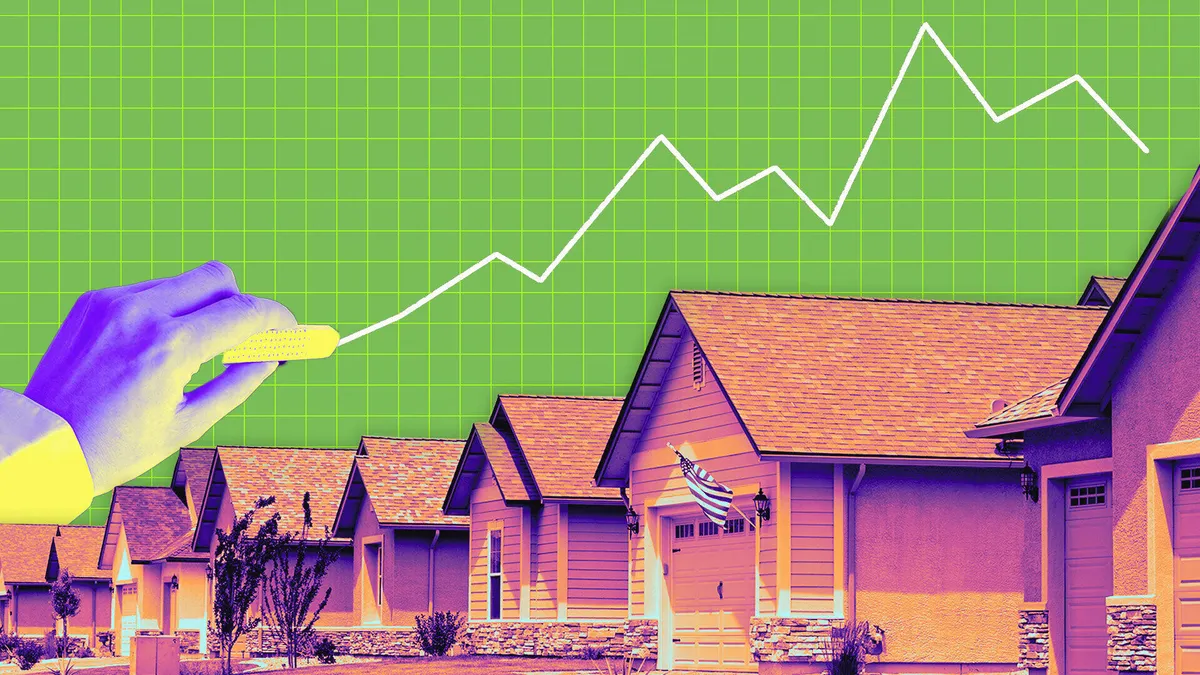Mortgage Rates Climb to 6.85%, Highest Since July
Mortgage rates have risen to 6.85%, marking the highest level since July. This increase is largely driven by rising bond yields, reflecting broader economic conditions and monetary policies. The rise in rates is expected to have significant implications for the housing market, particularly in terms of affordability and borrowing costs.
Rising Bond Yields Drive Rate Increases
The surge in mortgage rates is closely tied to rising bond yields, which serve as a key benchmark for lending rates. Higher yields indicate increased borrowing costs for lenders, which are passed on to consumers through higher mortgage rates. This trend underscores the interconnected nature of financial markets and its impact on everyday expenses.
Affordability Concerns Grow for Homebuyers
With mortgage rates nearing 7%, affordability has become a critical concern for potential homebuyers. Higher rates translate to increased monthly payments, reducing the purchasing power of prospective buyers. This shift is particularly challenging for first-time buyers, who may find it harder to enter the housing market.
Impact on Housing Market Activity
The rise in mortgage rates is expected to cool housing market activity. Elevated rates discourage buyers from making new purchases and can slow the pace of home sales. This trend could lead to a moderation in home price growth, offering a silver lining for some buyers despite the higher borrowing costs.
Borrowing Costs Increase for Existing Homeowners
The increase in mortgage rates also affects existing homeowners, particularly those looking to refinance. Higher rates reduce the financial benefits of refinancing, potentially limiting the ability of homeowners to lower their monthly payments or access equity. This dynamic adds to the financial pressures faced by households.
Regional Variations in Rate Impacts
The impact of rising mortgage rates varies by region, with high-cost areas feeling the effects more acutely. Cities with already expensive housing markets, such as San Francisco and New York, are likely to see greater affordability challenges compared to regions with lower average home prices.
Shift in Buyer Preferences
Higher mortgage rates are prompting a shift in buyer preferences, with many opting for smaller homes or properties in less expensive neighborhoods. Some buyers are exploring adjustable-rate mortgages (ARMs) as an alternative to fixed-rate loans, seeking lower initial payments despite the associated risks.
Builders Face Challenges Amid Slowing Demand
Homebuilders are also feeling the effects of rising rates, as reduced demand affects their ability to sell newly constructed homes. Higher financing costs for construction projects compound these challenges, potentially slowing new housing developments and exacerbating inventory shortages in the long term.
Potential for Reduced Home Price Growth
The increase in mortgage rates may temper home price growth, as reduced demand pressures sellers to lower prices. While this development could benefit buyers struggling with affordability, it may also deter sellers from entering the market, further limiting inventory.
Implications for the Broader Economy
Higher mortgage rates have implications beyond the housing market, as they influence consumer spending and economic activity. Increased housing costs can reduce disposable income, potentially slowing growth in other sectors of the economy. This ripple effect highlights the importance of mortgage rates as an economic indicator.
Central Bank Policies Under Scrutiny
The rise in mortgage rates has renewed scrutiny of central bank policies, particularly in terms of interest rate hikes. The Federal Reserve’s efforts to combat inflation through tighter monetary policy have contributed to higher borrowing costs. Market participants are closely monitoring the Fed’s next moves for clues on future rate trajectories.
Opportunities for Cash Buyers
Amid rising rates, cash buyers are gaining a competitive edge in the housing market. Without the need for financing, these buyers can avoid the impact of higher borrowing costs and negotiate better deals. This trend underscores the advantage of liquidity in a challenging market environment.
Calls for Policy Interventions
Housing advocates and industry leaders are calling for policy interventions to address affordability challenges. Proposals include increased support for first-time buyers, expanded access to affordable housing programs, and measures to boost housing supply. These initiatives aim to mitigate the effects of rising mortgage rates on vulnerable populations.
Long-Term Trends in Mortgage Rates
While the current rate increase poses challenges, experts note that mortgage rates remain historically low compared to previous decades. Long-term trends suggest that rates may stabilize or decline as inflationary pressures ease and economic conditions normalize. This perspective offers hope for buyers and homeowners navigating the current market.
Conclusion: Navigating a High-Rate Environment
The rise in mortgage rates to 6.85% reflects broader economic trends and presents challenges for homebuyers, homeowners, and the housing market. As affordability concerns grow, the need for strategic financial planning and targeted policy solutions becomes increasingly apparent. Despite the current hurdles, the housing market’s resilience and adaptability provide a foundation for recovery and growth in the long term.




































